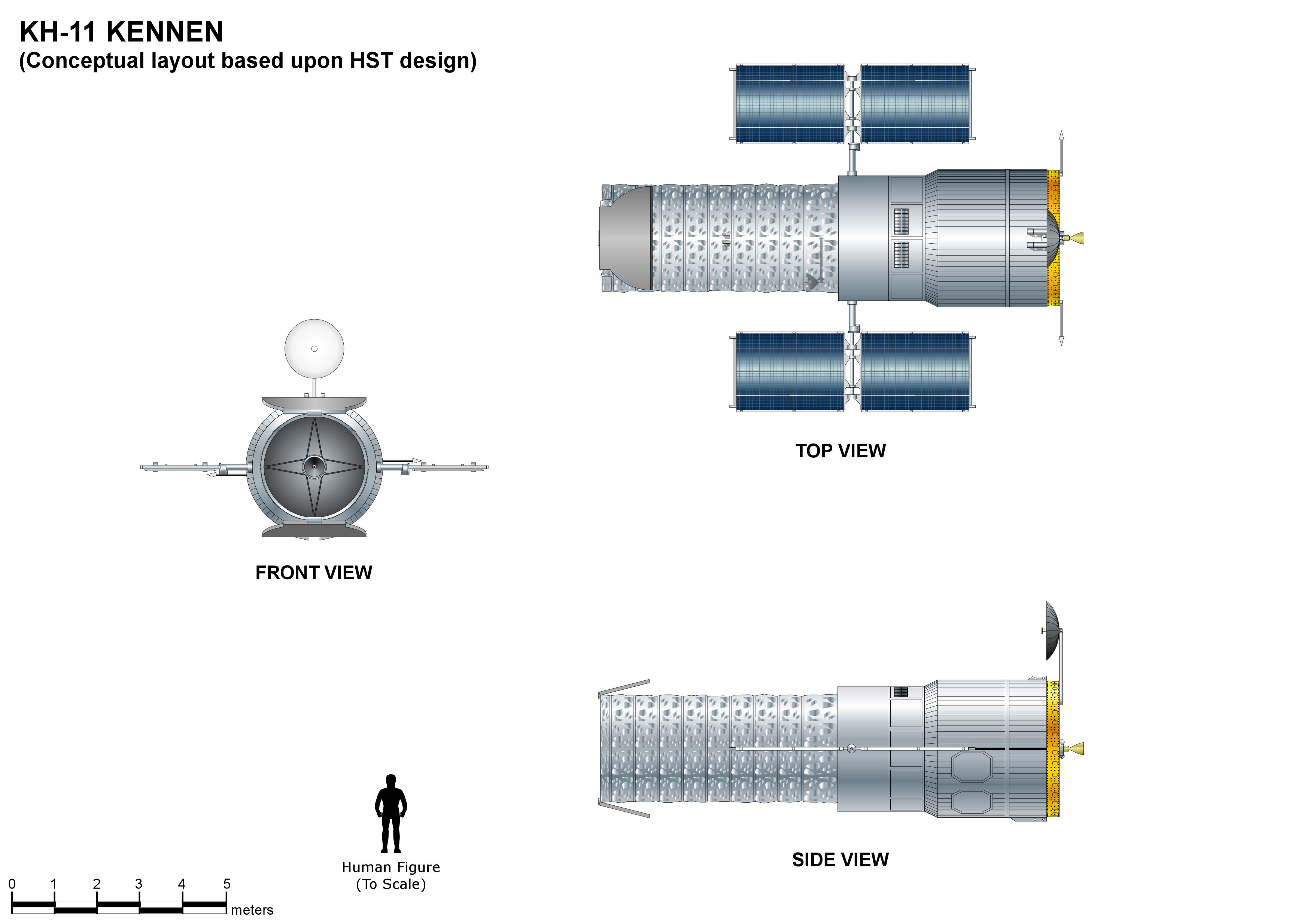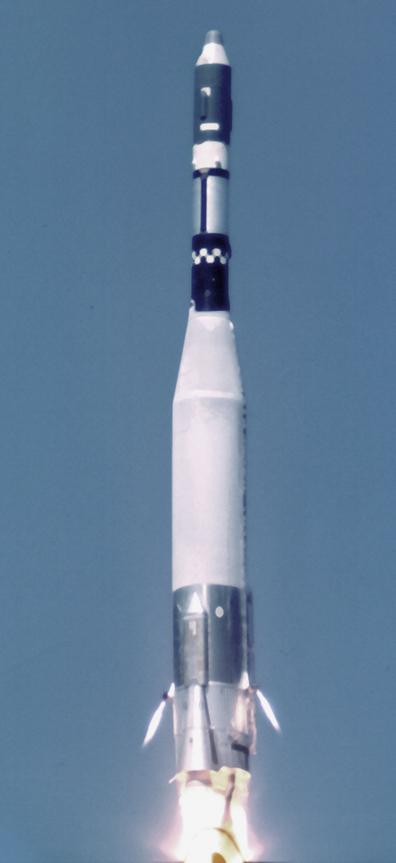|
Enhanced Imaging System
Enhanced Imaging System (EIS), officially referred to as "Enhanced Imagery System", previously known as 8X, and sometimes unofficially known as Misty 2 and KH-13, is an American reconnaissance satellite program. A derivative of the Improved Crystal satellites, EIS replaced Misty, and was intended to provide more coverage and dwell time than previous reconnaissance satellites; like Misty, it has stealth capabilities. Only one EIS satellite has been launched; USA-144, which was placed into orbit by a Titan IVB rocket on 22 May 1999. History In 1995, a ''Los Angeles Times'' article reported that the 8X program was intended as "a major upgrade to the KH-12", with a mass of as much as 20 tons, which would be used for detailed imaging with a wide field of view. The cost of the program was a subject of disagreement from some within the military at the time. By 1998, the program had been renamed Enhanced Imaging System. The Future Imagery Architecture program, which was intended to repl ... [...More Info...] [...Related Items...] OR: [Wikipedia] [Google] [Baidu] |
David Darling (astronomer)
David Darling (born 29 July 1953 in Glossop, Derbyshire) is an England, English astronomer, freelance science writer, and musician. Darling has published numerous popular science works, including ''Life Everywhere: The Maverick Science of Astrobiology'' in 2001 and ''The Universal Book of Mathematics'' in 2004. He maintains the online ''Internet Encyclopedia of Science''. A review of Darling's book ''Soul Search'', stated that "he develops a sort of scientific pantheism positing that, with death, we move from the narrow consciousness of our highly selective, reality-filtering brain to the wider, timeless consciousness of the unbound universe." ''Publishers Weekly''. Retrieved 24 January 2021. Bibliography * ''We Are Not Alone: Why We ...[...More Info...] [...Related Items...] OR: [Wikipedia] [Google] [Baidu] |
Jane's Defence Weekly
''Jane's Defence Weekly'' (abbreviated as ''JDW'') is a weekly magazine reporting on military and corporate affairs, edited by Peter Felstead. It is one of a number of military-related publications named after John F. T. Jane, an Englishman who first published '' Jane's All the World's Fighting Ships'' in 1898. It is a unit of Jane's Information Group, which was purchased by IHS in 2007. The magazine has a large circulation and is frequently cited in publications worldwide. History ''Jane's Defence Weekly'' was established in 1984 replacing the now-defunct ''Jane's Defence Review''. The latter was started in 1978 and was published on a monthly basis. Samuel Loring Morison In 1984, only months after the magazine was established, ''Jane's Defence Weekly'' gained worldwide attention after printing several images from an American spy satellite of the Nikolaiev 444 shipyard in the Black Sea, showing a Kiev-class aircraft carrier under construction.https://news.google.com/newspapers? ... [...More Info...] [...Related Items...] OR: [Wikipedia] [Google] [Baidu] |
KH-11
The KH-11 KENNEN (later renamed CRYSTAL,p.199-200 then Evolved Enhanced CRYSTAL System, and codenamed 1010 and Key Hole) is a type of reconnaissance satellite first launched by the American National Reconnaissance Office (NRO) in December 1976. Manufactured by Lockheed in Sunnyvale, California, the KH-11 was the first American spy satellite to use electro-optical digital imaging, and so offer real-time optical observations. Later KH-11 satellites have been referred to by outside observers as KH-11B or KH-12, and by the names "Advanced KENNEN", "Improved Crystal" and "Ikon". Official budget documents refer to the latest generation of electro-optical satellites as ''Evolved Enhanced CRYSTAL System''. The Key Hole series was officially discontinued in favor of a random numbering scheme after repeated public references to KH-7 GAMBIT, KH-8 GAMBIT 3, KH-9 HEXAGON, and KH-11 KENNEN satellites. The capabilities of the KH-11 are highly classified, as are images they produce. The s ... [...More Info...] [...Related Items...] OR: [Wikipedia] [Google] [Baidu] |
KH-10
The Manned Orbiting Laboratory (MOL) was part of the United States Air Force (USAF) human spaceflight program in the 1960s. The project was developed from early USAF concepts of crewed space stations as reconnaissance satellites, and was a successor to the canceled Boeing X-20 Dyna-Soar military reconnaissance space plane. Plans for the MOL evolved into a single-use laboratory, for which crews would be launched on 30-day missions, and return to Earth using a Gemini B spacecraft derived from NASA's Gemini spacecraft and launched with the laboratory. The MOL program was announced to the public on 10 December 1963 as an inhabited platform to demonstrate the utility of putting people in space for military missions; its reconnaissance satellite mission was a secret black project. Seventeen astronauts were selected for the program, including Major Robert H. Lawrence Jr., the first African-American astronaut. The prime contractor for the spacecraft was McDonnell Aircraft Corporation; ... [...More Info...] [...Related Items...] OR: [Wikipedia] [Google] [Baidu] |
Manned Orbital Laboratory
The Manned Orbiting Laboratory (MOL) was part of the United States Air Force (USAF) human spaceflight program in the 1960s. The project was developed from early USAF concepts of crewed space stations as reconnaissance satellites, and was a successor to the canceled Boeing X-20 Dyna-Soar military reconnaissance space plane. Plans for the MOL evolved into a single-use laboratory, for which crews would be launched on 30-day missions, and return to Earth using a Gemini B spacecraft derived from NASA's Gemini spacecraft and launched with the laboratory. The MOL program was announced to the public on 10 December 1963 as an inhabited platform to demonstrate the utility of putting people in space for military missions; its reconnaissance satellite mission was a secret black project. Seventeen astronauts were selected for the program, including Major Robert H. Lawrence Jr., the first African-American astronaut. The prime contractor for the spacecraft was McDonnell Aircraft Corporation; ... [...More Info...] [...Related Items...] OR: [Wikipedia] [Google] [Baidu] |
KH-9 HEXAGON
KH-9 ( BYEMAN codename HEXAGON), commonly known as Big Bird or KeyHole-9, p.32 Big Bird was a series of photographic reconnaissance satellites launched by the United States between 1971 and 1986. Of twenty launch attempts by the National Reconnaissance Office, all but one were successful. Photographic film aboard the KH-9 was sent back to Earth in recoverable film return capsules for processing and interpretation. The highest ground resolution achieved by the main cameras of the satellite was . Another source says "images in the "better-than-one-foot" category" for the last "Gambit" missions. They are also officially known as the Broad Coverage Photo Reconnaissance satellites (Code 467), built by Lockheed Corporation for the National Reconnaissance Office (NRO). The satellites were an important factor in determining Soviet military capabilities and in the acquisition of accurate intelligence for the formulation of U.S. national policy decisions as well as deployment of U.S. f ... [...More Info...] [...Related Items...] OR: [Wikipedia] [Google] [Baidu] |
KH-8
The KH-8 ( BYEMAN codename Gambit-3) was a long-lived series of reconnaissance satellites of the " Key Hole" (KH) series used by the United States from July 1966 to April 1984, and also known as Low Altitude Surveillance Platform. The satellite ejected "film-bucket" canisters of photographic film that were retrieved as they descended through the atmosphere by parachute. Ground resolution of the mature satellite system was better than . There were 54 launch attempts of the 3,000 kilogram satellites, all from Vandenberg Air Force Base, on variants of the Titan III rocket. Three launches failed to achieve orbit. The first one was satellite #5 on April 26, 1967 which fell into the Pacific Ocean after the Titan second stage developed low thrust. The second was satellite #35 on May 20, 1972 which suffered an Agena pneumatic regulator failure and reentered the atmosphere. A few months later, pieces of the satellite turned up in England and the US managed to arrange for their hasty ... [...More Info...] [...Related Items...] OR: [Wikipedia] [Google] [Baidu] |
KH-7
BYEMAN codenamed GAMBIT, the KH-7 (Air Force Program 206) was a reconnaissance satellite used by the United States from July 1963 to June 1967. Like the older CORONA system, it acquired imagery intelligence by taking photographs and returning the undeveloped film to earth. It achieved a typical ground-resolution of to . Though most of the imagery from the KH-7 satellites was declassified in 2002, details of the satellite program (and the satellite's construction) remained classified until 2011. In its summary report following the conclusion of the program, the National Reconnaissance Office concluded that the GAMBIT program was considered highly successful in that it produced the first high-resolution satellite photography, 69.4% of the images having a resolution under ; its record of successful launches, orbits, and recoveries far surpassed the records of earlier systems; and it advanced the state of the art to the point where follow-on larger systems could be developed and ... [...More Info...] [...Related Items...] OR: [Wikipedia] [Google] [Baidu] |
KH-6
BYEMAN codenamed LANYARD, the KH-6 was the unsuccessful first attempt to develop and deploy a very high-resolution optical reconnaissance satellite by the United States National Reconnaissance Office. Launches and launch attempts spanned the period from March to July 1963. The project was quickly put together to get imagery of a site near Leningrad suspected of having anti-ballistic missiles. The satellite carried Itek's "E-5" camera developed for the SAMOS program, which had been cancelled. The camera had a focal length of and could discern objects on the ground in size. The ground swath of the camera was . The satellite weighed , and had a single re-entry vehicle in which exposed film was returned to earth for a mid-airFederation of American ScientistFASorg: ''KH-6''/ref> aircraft recovery. The KH-6 was manufactured by Lockheed Martin and launched from Vandenberg Air Force Base on Thor-Agena D launch vehicles. Launches * KH-6 8001 launch failed 18 March 1963NSSDC ID: P11 ... [...More Info...] [...Related Items...] OR: [Wikipedia] [Google] [Baidu] |
KH-5
KH-5 ARGON was a series of reconnaissance satellites produced by the United States from February 1961 to August 1964. The KH-5 operated similarly to the CORONA series of satellites, as it ejected a canister of photographic film. At least 12 missions were attempted, but at least 7 resulted in failure. The satellite was manufactured by Lockheed. Launches used Thor-Agena launch vehicles flying from Vandenberg Air Force Base, with the payload being integrated into the Agena. Payload Different versions of the satellite varied in mass from . At least two missions deployed ELINT subsatellites. Ground resolution for the satellite was , with a swath of . The onboard camera had a focal length of 76 mm. The purpose of the system, which produced relatively low-resolution images compared to other spy satellites, was to provide imagery for cartography purposes. This was one of the tasks that had originally been planned for the SAMOS series of satellites equipped with the (quickly canc ... [...More Info...] [...Related Items...] OR: [Wikipedia] [Google] [Baidu] |
KH-4
The CORONA program was a series of American strategic reconnaissance satellites produced and operated by the Central Intelligence Agency (CIA) Directorate of Science & Technology with substantial assistance from the U.S. Air Force. The CORONA satellites were used for photographic surveillance of the Soviet Union (USSR), China, and other areas beginning in June 1959 and ending in May 1972. History In 1957, the Soviet Union launched Sputnik 1, the first artificial Earth satellite. Officially, Sputnik was launched to correspond with the International Geophysical Year, a solar period that the International Council of Scientific Unions declared would be ideal for the launching of artificial satellites to study Earth and the solar system. However, the launch led to public concern about the perceived technological gap between the West and the Soviet Union. The unanticipated success of the mission precipitated the Sputnik Crisis, and prompted President Dwight D. Eisenhower to auth ... [...More Info...] [...Related Items...] OR: [Wikipedia] [Google] [Baidu] |

.jpg)




.jpg)
